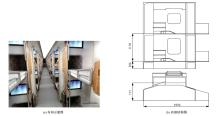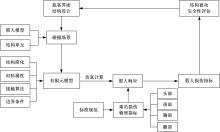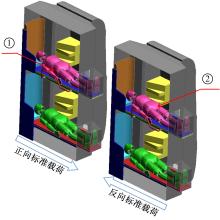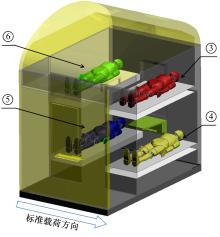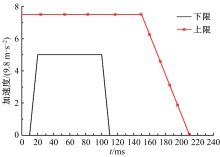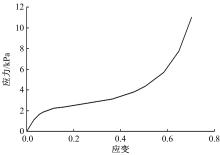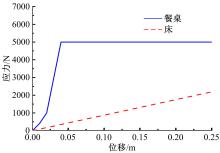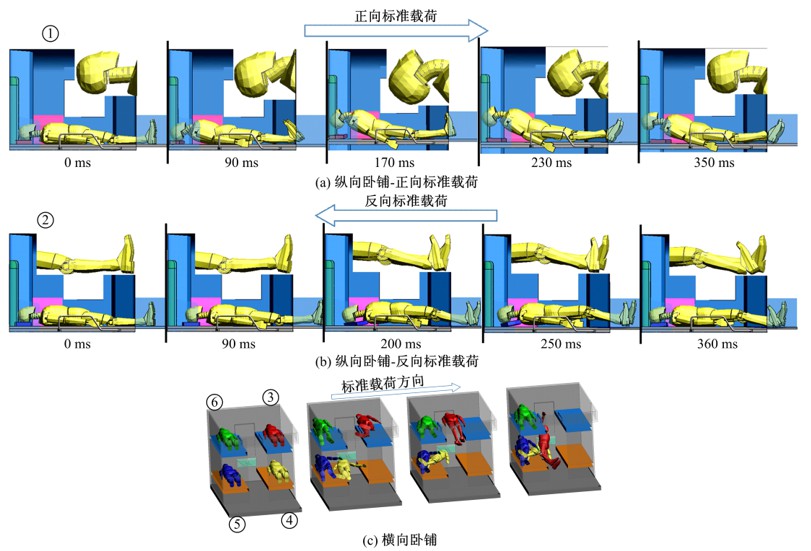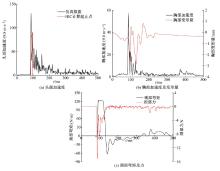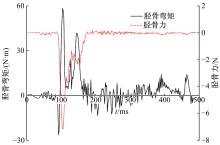Journal of Jilin University(Engineering and Technology Edition) ›› 2020, Vol. 50 ›› Issue (1): 147-155.doi: 10.13229/j.cnki.jdxbgxb20180942
Simulation analysis and evaluation on passive safety of the longitudinal berth
Xin TONG1( ),Le-le ZHANG1(
),Le-le ZHANG1( ),Wen LIU1,Hong-jun KANG2
),Wen LIU1,Hong-jun KANG2
- 1. School of Mechanical, Electronic and Control Engineering, Beijing Jiaotong University, Beijing 100044, China
2. Product R&D Center, Tangshan Railway Vehicle Co. , Ltd. , Tangshan 063035, China
CLC Number:
- U298.2
| 1 | 雷成, 肖守讷, 罗世辉, 等 . 轨道车辆耐碰撞性研究进展[J]. 铁道学报, 2013, 35(1): 31-40. |
| Lei Cheng , Xiao Shou-ne , Luo Shi-hui , et al . State-of-the-art research development of rail vehicles crashworthiness[J]. Journal of the China Railway Society, 2013, 35(1): 31-40. | |
| 2 | Carvalho M , Ambrosio J , Milho J . Implications of the inline seating layout on the protection of occupants of railway coach interiors[J]. International Journal of Crashworthiness, 2011, 16 (5): 557-568. |
| 3 | Okino Tomohiro , Kazuma Nakai , Junichi Takano , et al . Research of passenger’s safety sitting on the typical Japanese transverse seat in the event of a level crossing accident[C]∥The 11th International Symposium Passive Safety of Rail Vehicles. Berlin: Verlag des IFV BAHNTECHNIK e. V.,2017 |
| 4 | Wei Liang , Zhang Le-le . Evaluation and improvement of crashworthiness for high-speed train seats[J]. International Journal of Crashworthiness, 2018, 23(5): 561-568. |
| 5 | Rail Safety and Standards Board . GM/RT 2100 issue five requirements for rail vehicle structures[M]. England London: Derby Rail Safety and Standards Board, 2012. |
| 6 | 黄俊辉 . 可变编组动车组设计[M]. 北京:中国铁道出版社,2015. |
| 7 | 黄志其, 尹志民, 陈慧, 等 . 7003-T6铝合金挤压型材在线热处理工艺研究[J]. 轻合金加工技术, 2012, 40(2): 38-41. |
| Huang Zhi-qi , Yin Zhi-min , Chen Hui , et al . On line process technology research of 7003-T6 aluminum alloy profile[J]. Light Alloy Fabrication Technology, 2012, 40(2): 38-41. | |
| 8 | Menchawi M , Almgren L . Modeling of fiberglass reinforced epoxy composites in LS-DYNA[D]. Sweden: College of Mechanical Engineering, Linköpings University, 2014. |
| 9 | 高江华 . 乘员-坐垫系统垂向动力学建模与分析[D].北京:清华大学汽车工程系, 2014. |
| Gao Jiang-hua . Modeling and analysis on the vertical dynamics of an occupant and seat cushion system[D]. Beijing: Automobile Engineering Department, Tsinghua University, 2014. | |
| 10 | Xie S , Tian H . Dynamic simulation of railway vehicle occupants under secondary impact[J]. Vehicle System Dynamics, 2013, 51(12): 1803-1817. |
| 11 | 王存义, 张乐乐, 卫亮, 等 . 基于坐姿假人的地铁乘员二次碰撞损伤影响分析[J]. 铁道学报, 2015, 37(3): 14-22. |
| Wang Cun-yi , Zhang Le-le , Wei Liang , et al . Analysis of second impact on passenger injuries in a subway vehicle based on sitting dummy[J]. Journal of the China Railway Society, 2015, 37(3): 14-22. |
| [1] | Wei-min ZHUANG,Hong-da SHI,Dong-xuan XIE,Guan-nan YANG. Thickness distribution of adhesive layer in dissimilar clinch⁃adhesive hybrid joint with steel and aluminum alloy [J]. Journal of Jilin University(Engineering and Technology Edition), 2020, 50(1): 100-106. |
| [2] | Fang-wu MA,Li-wei NI,Liang WU,Jia-hong NIE,Guang-jian XU. Position and attitude closed loop control of wheel⁃leggedall terrain mobile robot [J]. Journal of Jilin University(Engineering and Technology Edition), 2019, 49(6): 1745-1755. |
| [3] | Wei-min ZHUANG,Yang LIU,Peng-yue WANG,Hong-da SHI,Ji-shuan XU. Simulation on peeling failure of self⁃piercing riveted joints insteel and aluminum alloy dissimilar sheets [J]. Journal of Jilin University(Engineering and Technology Edition), 2019, 49(6): 1826-1835. |
| [4] | Wei-ping SHI,Xu ZHAO,Xing-jun HU,Tian-ming YU,Bo-wen LIU,Yan DUAN. Design and numerical simulation of water restriction device AICD for natural gas exploitation [J]. Journal of Jilin University(Engineering and Technology Edition), 2019, 49(6): 1986-1991. |
| [5] | Xin CHEN,Xin-jian RUAN,Ming LI,Ning WANG,Jia-ning WANG,Kai-xuan PAN. Application of modified discrete scheme based onlarge eddy simulation [J]. Journal of Jilin University(Engineering and Technology Edition), 2019, 49(6): 1756-1763. |
| [6] | Ya-feng GONG,Bo WANG,Guo-jin TAN,Li-min ZHANG,Wen-ding WU,Hai-peng BI. Comparative analysis of mechanical characteristics of two typical fabricated culverts in Jilin [J]. Journal of Jilin University(Engineering and Technology Edition), 2019, 49(6): 1865-1870. |
| [7] | Xiu-quan LU,Chun-yu HU,Ya-long CHAI,Wen-xing MA,Jian-nan ZHANG. Analysis of transient flow field characteristics of large-scale hydrodynamic coupling under speed regulation [J]. Journal of Jilin University(Engineering and Technology Edition), 2019, 49(5): 1539-1546. |
| [8] | Zhuo YI,Wen-zhi FU,Ming-zhe LI. Numerical simulation and experiment on double⁃layered split ultrahigh pressure die [J]. Journal of Jilin University(Engineering and Technology Edition), 2019, 49(5): 1593-1599. |
| [9] | Xin LI,Yan-peng SUN,Dan WANG,Jun-xu CHEN,Zheng-wei GU,Hong XU. Finite element numerical simulation for automobile front floor forming [J]. Journal of Jilin University(Engineering and Technology Edition), 2019, 49(5): 1608-1614. |
| [10] | Bo ZHANG,Jian-wei ZHANG,Kong-hui GUO,Hai-tao DING,Hong-qing CHU. Current control of permanent magnet synchronous motor for road feeling simulation [J]. Journal of Jilin University(Engineering and Technology Edition), 2019, 49(5): 1405-1413. |
| [11] | Hui YE,Yan-rong ZHU,Yong-feng PU. Numerical simulation of strain rate effect of fiber reinforced composites [J]. Journal of Jilin University(Engineering and Technology Edition), 2019, 49(5): 1622-1629. |
| [12] | Zhao⁃wei QU,Zhao⁃tian PAN,Yong⁃heng CHEN,Peng⁃fei TAO,Di SUN. Car⁃following model with improving safety distance based on optimal velocity model [J]. Journal of Jilin University(Engineering and Technology Edition), 2019, 49(4): 1092-1099. |
| [13] | Xin CHEN,Ming LI,Xin⁃jian RUAN,Ning WANG,Jia⁃ning WANG. Investigation of vortical structures in wake of Ahmed body by delayed detached⁃eddy simulation turbulence model using immersed boundary method [J]. Journal of Jilin University(Engineering and Technology Edition), 2019, 49(4): 1034-1042. |
| [14] | Hua ZHOU,Zhi⁃gang YANG,Hui ZHU. Aerodynamic calculation of MIRA model correlated with wind tunnel test [J]. Journal of Jilin University(Engineering and Technology Edition), 2019, 49(4): 1043-1053. |
| [15] | Dong⁃liang CHEN,Rui ZANG,Peng DUAN,Wei⁃peng ZHAO,Xu⁃tao WENG,Yang SUN,Yi⁃peng TANG. Biomimetic design of multi⁃link fishbone based on crescent′s fishtail propulsion theory [J]. Journal of Jilin University(Engineering and Technology Edition), 2019, 49(4): 1246-1257. |
|
||
